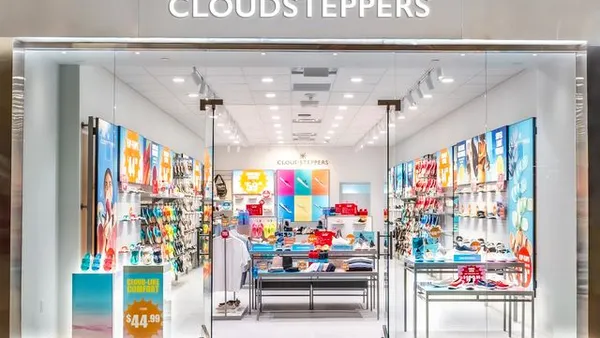Dive Brief:
-
Victoria’s Secret Q3 net sales fell 4% to $1.27 billion, with comps down 7%. Intimates sales in North America fell mid-single digits year over year. The company’s market share in that category remains flat, with digital share up slightly and stores share down slightly.
-
Gross margin contracted by 40 basis points to 34.3%, according to a company earnings presentation. The company swung to a $70.7 million loss, from $22.2 million in net income a year ago.
-
The company expanded its remodeled “Store of the Future” fleet to 71 stores in North America, and that will grow further to 85 by the end of the year.
Dive Insight:
The beauty category is outperforming Victoria’s Secret’s core lingerie business, as the retailer continues its work to revamp its marketing approach and arrest declines in market share.
Sales picked up late in Q3 and strength has continued into November, CEO Martin Waters said on a conference call with analysts Thursday.
The company has softened its marketing turnaround somewhat. Victoria’s Secret had taken aggressive steps to walk away from what many observers had criticized as hyper-sexualized marketing, which had worked for years but more recently fell out of favor. The brand ended its well-known fashion show in 2019 as it increasingly came under fire and as the #MeToo movement gained strength. In the third quarter, the company relaunched the show as an Amazon Prime original streaming event.
On the call, Waters described the new show as a significant resetting of the company’s marketing.
“We create a media frenzy — mission accomplished. Be part of the conversation of what popular culture looks like now, where we were outside of that conversation previously,” he said.
But Victoria’s Secret’s messages to consumers are now somewhat perplexing, in part because most of its stores remain unchanged, suggesting that little is fundamentally different, according to GlobalData Managing Director Neil Saunders. The company runs 815 stores in the U.S. and 24 in Canada.
“On top of this, because recent results have been weak, we feel that management jumps back and forth between trying to become a more genuine and authentic brand and going back to its roots of selling with sultry images and marketing,” Saunders said in emailed comments. “All of this just creates confusion and muddle which is ultimately damaging to sales.”
The company continues to lose share as a result, though that’s in part because, in the current economic environment, consumers are looking for better price points at places like Target, according to GlobalData research. Others have gravitated to DTC brands and Aerie, which have clearer marketing propositions.
The company’s Pink brand, which has a younger audience and which the company sees as a stepping stone to becoming a Victoria’s Secret customer, is on the mend, though turning the business around will take time, Waters said. He also touted strength at the newly acquired Adore Me DTC brand, though the company didn’t break out sales results.
Waters also noted strong results from a new loyalty program, which he said now has more than 22 million members who drive about 75% of sales each week.
The loyalty program, continued innovation in bras and some good marketing campaigns are helpful but represent small steps that can’t remedy “the failure to take the bigger step of defining the essence of the brand,” Saunders said. The fourth quarter will also likely benefit the company thanks to strong gifting opportunities, he said.















